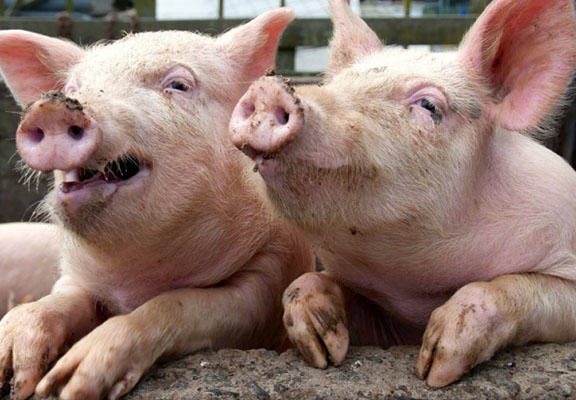

At what age to prefer to purchase pigs? Whether you prefer young piglets or animals near to butchering age, it is key to know the age of the animals you buy. In most cases, a reputable seller will provide you with accurate information, but should a seller be dishonest or have poor record keeping skills, you will need to be able to determine age on your own.
If your plans, and budget, include bringing home a pig that is ready to be fattened for butchering purposes, it will be quite the unpleasant and unfortunate surprise to find out after the fact that your pig is much younger. A few months can make a lot of difference in terms of a pig that needs to be fattened versus a pig that continues to grow before fleshing out. A change in plans between two scenarios such as this can have a large impact on a smaller farmer, so knowing how to age pigs before purchase is imperative. Similarly, when it comes to show pigs, aging is also key to determining correct class entries.
While it is true that some experienced individuals can guesstimate age by appearance, aging pigs is most successfully done through dentition, or examining the presence and arrangement of teeth in their mouths. Certain teeth come in at certain times in their lives, indicating a pig to be of or near to a certain age. There are some cases in which variations from normal do occur, but as a general rule, dentition is the best means of aging pigs.
Some dentition guidelines as they pertain to age are as follows:
– At birth, piglets will have eight teeth.
– Upon reaching a month of age, two central incisors will appear in each jaw along with two temporary molars.
– By the time they reach eight weeks of age, temporary central incisors will be totally developed. Soon to follow are the two lateral temporary incisors, which should be visible if not already cut.
– At three months of age, four temporary incisors should have all broke through. These will be at varying lengths, with the outside incisors being longer than the central incisors.
– Pigs that have passed the six month mark in age will have cut their corner permanent incisors.
– Upon exceeding nine months of age, permanent tusks will be present, at approximately half of their full exposure upon maturity.
– After twelve months of age, two changes can be noted. Those include having cut at least one of the first three permanent molars as well as central incisors.
– Lateral temporary incisors are lost and replaced by permanent versions after a pig reaches 15 months of age.
– When the lateral permanent incisors have completed growth, the pig has arrived at 18 months of age or more.
– By 20 months of age, the pigs mouth and teeth will be fully developed.
As you age pigs, keep in mind that their first set of teeth are temporary and will be lost. It is when those teeth are lost and replaced that will indicate the age of the pig. By paying close attention to a developing mouth, you can get acquainted with each particular tooth and what it means as far as dentition is concerned, giving you a guideline for the successful aging of your pigs. Purchasing from a reputable seller is always the best route to go, but even they make mistakes sometimes. If ever you have any doubt about the age of a prospective purchase, open that pig’s mouth and check it out!
 Contact Jaguza Support
Contact Jaguza Support